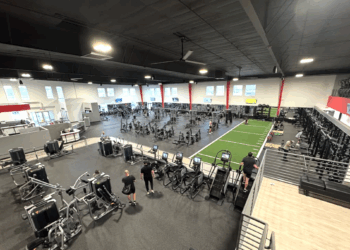Matt Warsh, a partner at KIG Insurance, shares the importance of reviewing your insurance coverage and three areas to pay attention to.
Have you had an insurance policy checkup or a second opinion in the last 12 months? Did you sit down with your agent during your last renewal and review the coverage line by line? As a health club owner, do you understand which risks are covered on your policy and which aren’t? If the answer to any of those questions is “no,” you may not have the proper coverage in place and it’s time to make a change.
Most people don’t know the true value of their insurance policy until they have a claim, at which point it will be too late. It is important to realize what you are buying before the claim ever happens. Having the proper coverage in place and working with an agent that understands the particular risks that gym owner’s face is extremely vital towards the protection of your facility.
Simplifying the insurance for health clubs, we can really break it down into three main parts — excluding state specific bonds.
- Property coverage. This portion of your insurance policy will include coverage limits for tangible things like contents and equipment, tenant improvements and building utilities, otherwise known as equipment breakdown. Most carriers also offer a property enhancement package which adds extra coverage for specific things like outdoor property/signs, members’ property, water backup, property off-premise, property in transit, etc. Make sure to look for those enhancements on your policy. Finally, the property portion should encompass business interruption coverage. If there is an electrical fire at your gym and the doors are closed for six months while the space is being fixed, you will be losing massive amounts of revenue. Not to mention all the ongoing expenses like payrolls, rents and utilities. Making sure your policy has the proper business interruption limit is paramount.
- Liability coverage. This portion of your insurance policy will cover your business from lawsuits alleging bodily injury or property damage. If you are not a building owner, it’s essential that you look at your lease, because most landlords require a specific amount of liability coverage. Slip and fall type accidents would be covered under your general liability and most policies come standard with $1,000,000 per occurrence. Your professional liability coverage should also be included here, which covers your employed trainers and instructors from giving advice on a particular exercise that winds up in injury. If you have tanning beds or HydroMassage, make sure your carrier doesn’t exclude those activities from your liability coverage. A few other major items that should be included in your liability coverage are hired and non-owned auto liability, abuse/molestation, employment practices liability, cyber liability and umbrella. The details of those coverages should be discussed with your agent.
- Workers compensation. According to most states, you are legally responsible to provide workman’s comp coverage for all your employees. If they get injured while on the job, this policy covers their medical care and lost wages. Workers comp is based on payroll and loss history. Make sure you are not missing this coverage otherwise you can be hit you with a fine.
Stay ahead in the fitness industry with exclusive updates!
Matt Warsh is a partner at KIG Insurance agency and manages the fitness insurance program, which operates in all 50 states. Matt can be reached directly at 248-350-5838 or by email at mattw@getkig.com. For more information on KIG, please visit www.getkig.com/fitness.










